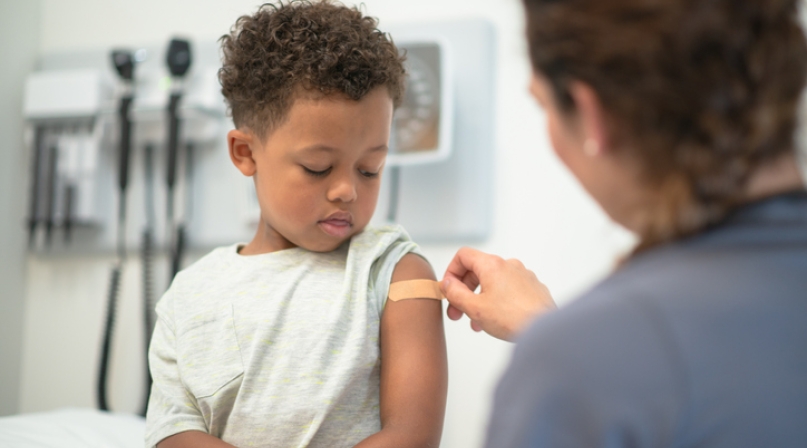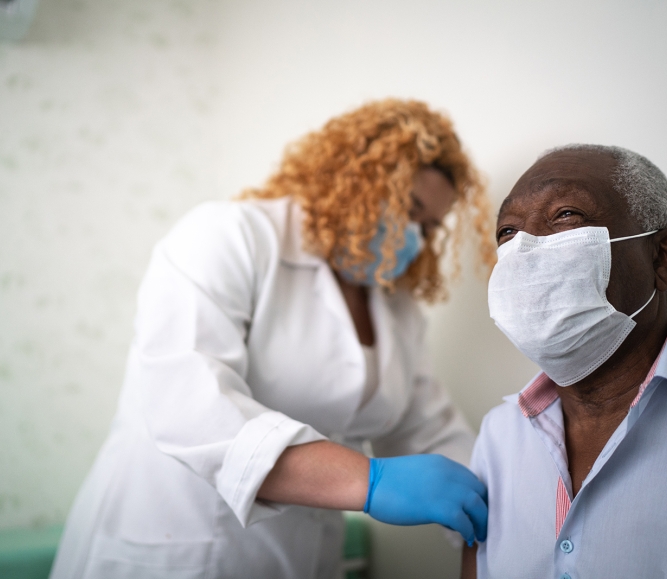CDC approves COVID-19 vaccine for children under 5
Author

Blaire Bryant
Upcoming Events
Related News

Key Takeaways
On June 18, the U.S. Centers for Disease Control and Prevention (CDC) approved the use of COVID-19 vaccines for children aged 6 months to 5 years old, following a recommendation from the Food and Drug Administration (FDA). This approval now expands vaccine eligibility for the use of the two primary COVID-19 vaccines in the U.S. – Pfizer-BioNTech and Moderna – to nearly 20 million additional children, and makes all Americans aged 6 months and older eligible to receive a COVID-19 vaccination.
The White House has indicated that the federal government has an initial supply of approximately 10 million doses of pediatric vaccines, for which states began placing orders last month. CDC has indicated that the distribution of pediatric vaccinations for children aged 5 and under has already begun and shots will be available at local pediatric practices, pharmacies, Federally Qualified Health Centers, local health departments, clinics and other locations as early as June 20. Earlier this month, the agency updated it’s Pediatric COVID-19 Vaccination Operational Planning Guide with information on dosage ordering and a pediatric readiness checklist for local distribution.
As key providers of local public health services and frontline service providers for the medically vulnerable, counties have supported the administration of nearly 600 million vaccinations in the United States to date and will continue to play an essential role in the administration of COVID-19 vaccines and boosters.
Additional Resources
Resource
The County Role in Vaccines

Related News

U.S. Department of Health and Human Services announces major restructuring
On March 27, the U.S. Department of Health and Human Services (HHS) announced a sweeping reorganization that will consolidate agencies, shift key programs under a new framework and eliminate thousands of positions. This change brings HHS in line with President Trump's Executive Order, “Implementing the President’s ‘Department of Government Efficiency’ Workforce Optimization Initiative.”

U.S. Department of Health and Human Services moves to reduce public comment in rulemaking
On February 28, the U.S. Department of Health and Human Services (HHS) announced a policy change limiting public comment opportunities to only those required by law. Published in the Federal Register on March 3, the decision rescinds the “Richardson Waiver,” a 1971 directive from then-HHS Secretary Elliot Richardson that encouraged broader public input on regulations related to public benefits, grants and healthcare policies.

U.S. Department of Health and Human Services renews Public Health Emergency Declaration to address national opioid crisis
On March 18, the U.S. Department of Health and Human Services (HHS), under the direction of Secretary Robert F. Kennedy, Jr. renewed the public health emergency (PHE) declaration to address the ongoing opioid crisis, extending critical federal support for coordination, treatment expansion and research efforts. While overdose deaths have declined by 25.5 percent over the past year, synthetic opioids like fentanyl continue to drive fatalities, with approximately 150 Americans dying daily from overdoses.